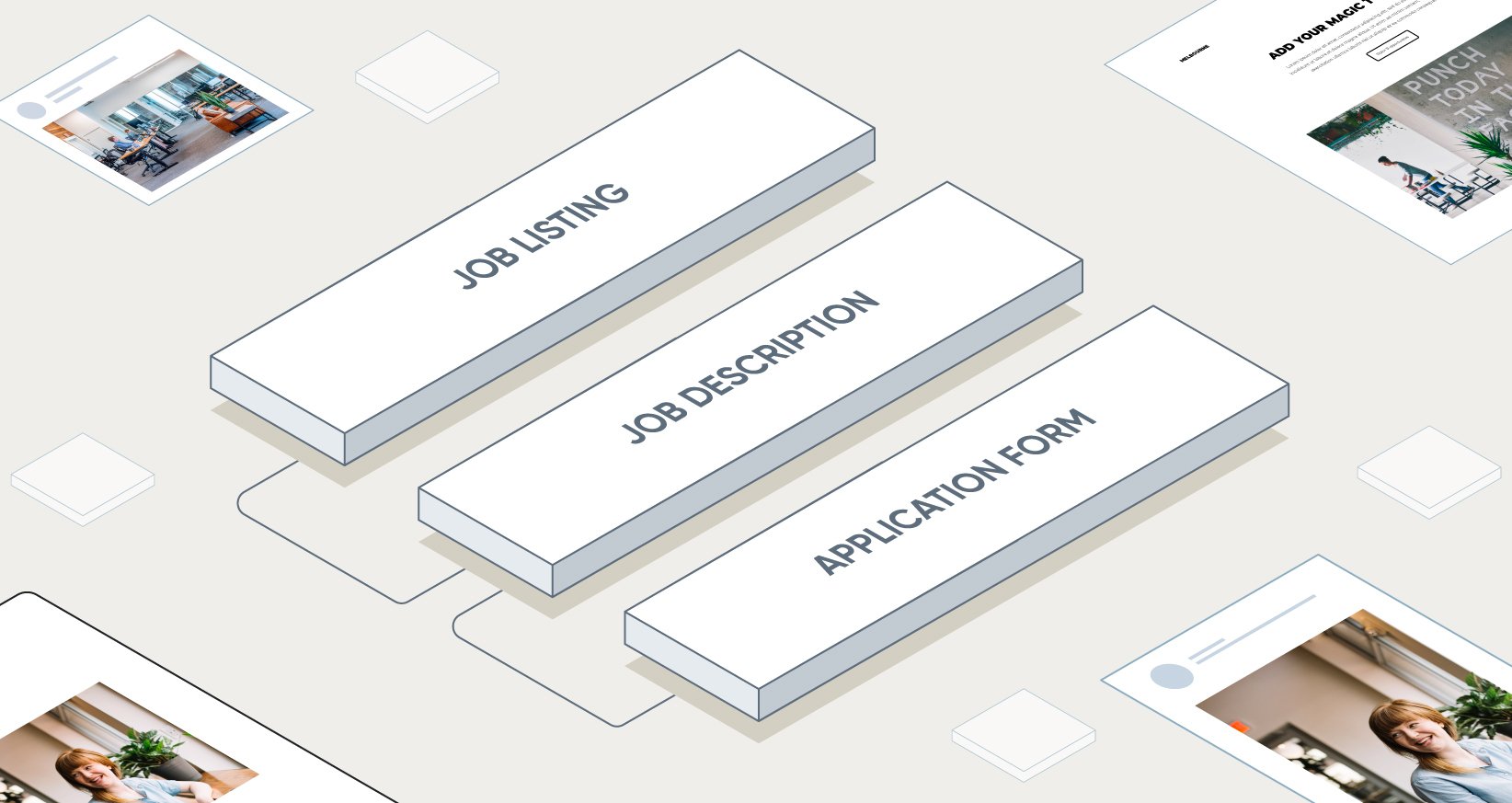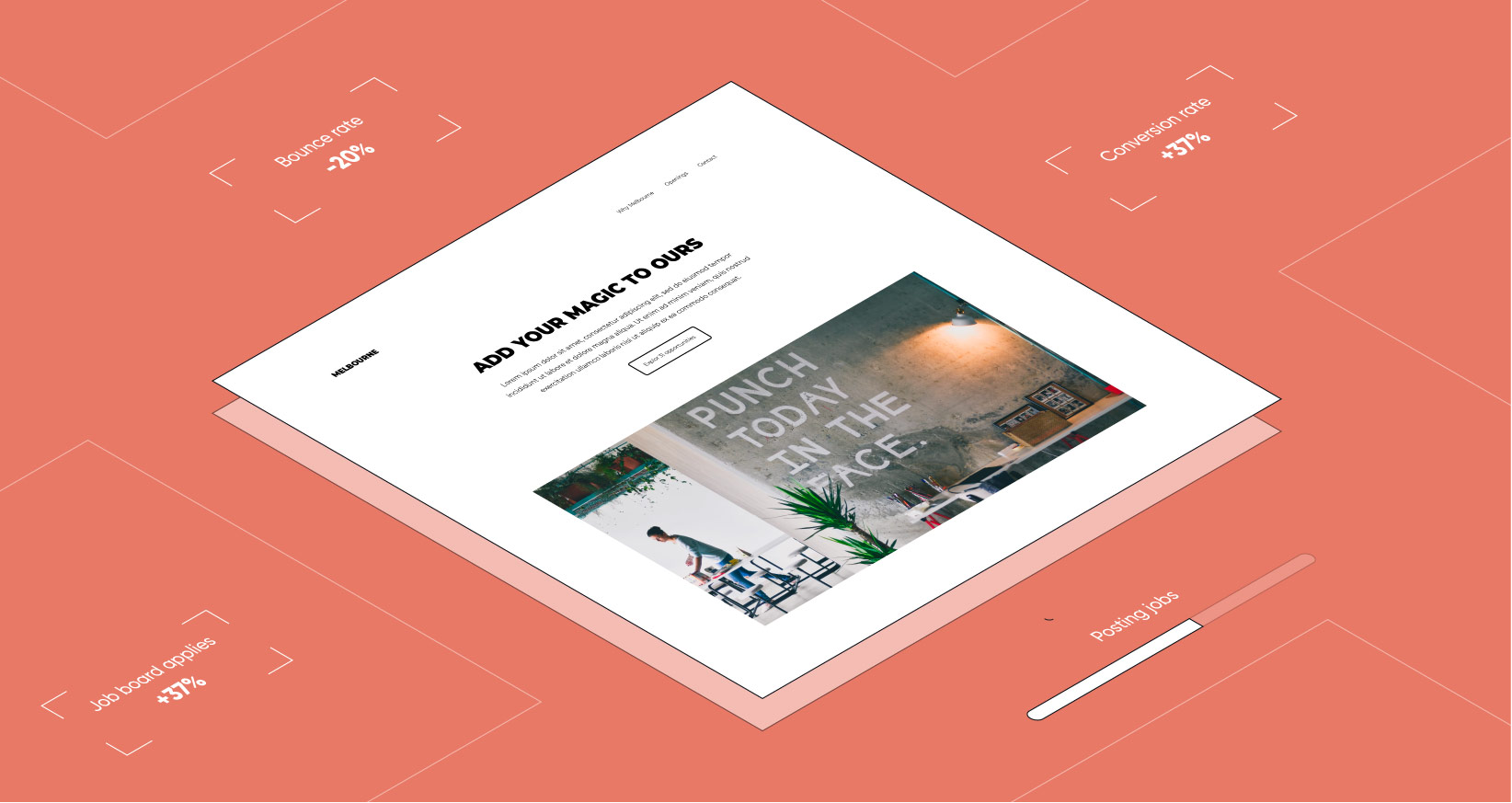Let's talk about the importance of applicant experience. Why? Because, like it or not, your recruitment success depends on it. In a recent study, Gartner found that a best-in-class applicant experience not only improved a company’s talent pool (with 95% of applicants saying that they would reapply and 97% saying that they would refer friends and coworkers), it even improved customer loyalty, with more than 80% of respondents saying that they would purchase more from the company as a result of their positive applicant experience.
Case in point, a few years ago, AT&T, who at that point had been struggling to offer a positive applicant experience, endeavored to improve its online application process (cutting its length by more than half, among other steps). The result was a staggering increase in application rates, leading to 300,000 more candidates, an estimated $1 million saved in recruiting costs, and a huge net increase in top-quality hires over low-quality hires. Yet, in spite of success stories like this one, most Fortune 500 companies are still struggling to offer their applicants the chance to fill out applications on their mobile phones.
Why is there such a significant disconnect between the importance of candidate experience and the average company’s ability to make it a priority? There are various factors at work, but to some extent, it often has to do with the design of the average applicant tracking system (ATS).
What is an Applicant Tracking System?
An Applicant Tracking System, or ATS, is a powerful software tool that companies can use to streamline and optimize their hiring process. With an ATS, recruiters and hiring managers can attract, source, evaluate, and hire top-quality candidates faster.
What is the primary purpose of an Applicant Tracking System?
An Applicant Tracking System (ATS) aims to streamline and optimize the hiring process, making it more efficient and effective. With a centralized platform, recruiters can collect and view applicants, track their progress, and filter them based on their qualifications, simplifying the recruitment process.
Modern Applicant Tracking Systems (ATSs) function as the central hub for various recruitment tools, including recruitment marketing platforms, job distribution channels, background checks, onboarding processes, and talent experience platforms. Possessing an ATS simplifies compliance with diverse hiring regulations and safeguards your organization from potential lawsuits as your workforce expands.
While an ATS can save recruiters time by automating the resume review process, it does have its limitations. From a candidate's perspective, ATSs are often cumbersome, and there’s no way to tell if their resume has been reviewed by a human being. This creates a poor candidate experience that may disengage top talent and entice them to accept a job offer elsewhere.
At the same time, recruiters and hiring managers risk overlooking highly qualified candidates in the database if they don't employ specific keywords. This also leads to missed opportunities for enhancing the candidate experience through prompt communication. Moreover, candidate pipelining becomes challenging, as there is no straightforward method to identify and engage with candidates who have previously expressed interest in the company or applied for a position.
Five ways to use an ATS to improve the candidate experience
1. Fewer questions
A recent Indeed study found that the online application at an average Fortune 500 company included 62.8 questions. Think about that for a second—that’s more questions than the math section of the SAT. Unfortunately, we’re likely to keep seeing applications of this length for as long as recruiters let their ATS structure dictate their application's structure. Of course, recruiters benefit from being able to centralize candidate data in a way that includes critical hiring data, and of course, there is much information that recruiters would like to have when making decisions about whom to weed out and whom to interview. But because ATS platforms are designed explicitly with the needs of recruiters in mind, they rarely encourage users to consider the candidate’s perspective or the value of their time.
As a result, when recruiters link their online applications to their ATS, they often prioritize their needs (and the needs of the ATS’s database) over their applicants’, asking them to enter redundant information on lengthy, frequently mobile-unfriendly forms. What’s worse, these systems often don’t allow users to save an application and return to it later, meaning that they often spend upwards of an hour filling out information that’s already on their resume or drop out of the application process altogether. Unsurprisingly, many candidates choose the latter.
2. Write stronger, more helpful job posts
Top-notch job posts quickly let candidates know whether the opportunity aligns with their qualifications and goals. Consequently, during discussions with potential candidates, they will already possess a solid understanding of the company and position, paving the way for more productive conversations.
Did you know that 17% of candidates withdraw from the recruiting process because of discrepancies between the job description and interview?
- Make use of your ATS’s analytics capabilities to gather insights about your talent pool while crafting job descriptions.
- Employ collaboration tools to swiftly share drafts with relevant stakeholders, enabling you to identify areas for enhancement.
- Save templates in your ATS to streamline your team's efforts and guarantee that your job descriptions are engaging and reader-friendly.
3. Hiring managers alignment to avoid wasting time
Avoid engaging with candidates before the hiring manager finalizes their preferences, as any subsequent changes may result in a negative candidate experience and waste both your time and theirs.
- Bring talent pool data from your ATS to the table when discussing ideal candidate profiles, enabling you to earn your hiring manager’s trust, make a stronger case for your strategy, and set the right expectations from day one.
- Give hiring managers and other stakeholders access to the ATS to increase their visibility into the recruiting process, empowering them to raise any issues in a timely manner.
- Track ROI data through your ATS and/or recruitment marketing platform to build the hiring manager’s confidence and improve your relationship, reducing alignment issues over time.
4. Streamline the hiring process
A seemingly never-ending hiring process can frustrate candidates—especially if they feel their time is wasted. While finding the right person doesn’t happen overnight, you can make the most of your ATS, and other hr tech tools to eliminate unnecessary steps and minimize friction.
- Integrate your ATS with your email to eliminate extensive scheduling exchanges and enable candidates to book time with you in just a few clicks.
- Urge interviewers and stakeholders to promptly upload their notes and scorecards to the ATS after screenings and interviews, minimizing time spent gathering feedback.
The average time it takes companies to fill a position is 33-49 days.
5. Keep candidates engaged and informed
The next step can be the most frustrating for the applicants who manage to make it through a company’s online application: waiting for a reply. Often, this frustration is made more acute by the fact that, in many cases, the waiting doesn’t ever really end—no confirmation of receipt, no information about the next steps, and no timeline for hearing a decision ever arrives in most cases. For the few applicants who eventually do receive e-mails about scheduling an interview, this may only be a minor annoyance, but for the vast majority of candidates who are facing implicit rejection, the lack of communication can dissuade them from ever applying to a position at that company again.
Keeping your applicants in the loop every step of the way, you can show candidates that you respect and appreciate their time, leaving them with a great impression of your company—even if they’re not ultimately hired.
- Keep track of each candidate's progress and set reminders to follow up after each interaction.
- Collaborate with your entire team in a unified platform, speeding up decision-making to allow for faster follow-ups.
- Automate the tasks you can to put more time back in your day for the things that matter most—like checking in with candidates, building the relationship, and sharing resources to help them prepare for the next step.
Can ATS alone help you improve candidate experience?
While an Applicant Tracking System (ATS) can be a useful tool in managing and organizing the recruitment process, it alone may not significantly improve the candidate experience. Here are some reasons why:
- Limited customizability: Many ATS solutions offer limited customization options, which may not allow you to fully tailor the application process according to your company's unique needs and branding.
- Inadequate parsing: As mentioned in your previous text, some ATS systems have poor resume parsing capabilities, leading candidates to re-enter much of the same information manually, causing frustration.
- Lack of personalization: ATS platforms often focus on process automation and may not provide personalized communication with candidates, which is essential for a positive candidate experience.
To truly improve candidate experience, consider combining your ATS with other strategies, such as:
- Enhancing your career page: Make sure your career page is visually appealing, easy to navigate, and clearly communicates your company's culture and values.
- Providing a user-friendly application process: Reduce the number of steps and time it takes for candidates to complete their applications.
- Offering clear communication: Keep candidates informed throughout the recruitment process with regular updates and prompt feedback.
- Integrating with other HR tools: Use additional HR tools and platforms to complement your ATS and create a seamless candidate experience from application to onboarding.
ATS Integration
So far in this post, we’ve examined a number of the ways in which ATS solutions could help improve candidate experience. In this last section, however, it’s not the candidates who are being directly impacted but the recruiters’ coworkers and partners in the hiring process. Specifically, we’ll be calling attention to the fact that ATS software can, under any circumstances, create recruitment silos, cutting off marketers and hiring managers from mission-critical applicant tracking information.
Imagine for a moment that you’re a hiring manager. Whatever system you’re utilizing for taking candidates through the interview process isn’t integrated with the ATS used by your recruiters. As a result, you may be missing information about the candidates that reach your desk. Even if you have all of a candidate's relevant info, you may not know why this candidate was brought into the interview stages over any other job seekers who may have applied. What kind of impact will this have on your ability to provide a personalized, high-quality candidate experience? It will most likely make it more difficult for you to offer an experience that delights your potential recruit and demonstrates your company's value.
Fortunately, things don’t have to be this way. Just because most applicant tracking systems aren’t integrated with processes further up and down the recruitment funnel, doesn’t mean that they can’t be integrated. In fact, when your ATS is used to help inform processes like recruitment marketing and even marketing automation, it can actually create more synergy between teams and lead to more effective recruitment overall. To reach that point, however, companies have to choose to make the applicant experience a top priority and leverage their technology towards that goal. As we saw at the start of this post, efforts like those can have huge payoffs in terms of recruitment ROI.
Conclusion
The applicant experience is crucial in the recruitment process, as a positive experience not only improves the company's talent pool but also customer loyalty.Despite this, many companies still struggle with providing a seamless experience, often due to the design of their Applicant Tracking System (ATS).
An ATS streamlines the hiring process, helping recruiters and hiring managers attract and hire top-quality candidates faster. However, ATSs have limitations that may lead to overlooking highly qualified candidates and a poor candidate experience.
SmartDreamers, a leading recruitment marketing platform, seamlessly integrates with any ATS, providing an enhanced candidate experience. By bridging the gap between ATSs and recruitment marketing efforts, SmartDreamers ensures a smooth and efficient talent attraction and hiring process. The platform's powerful analytics and automation capabilities help recruiters create targeted campaigns, optimize job postings, and nurture candidate relationships. By streamlining these processes, companies can offer candidates a positive experience throughout the entire recruitment journey, ultimately improving the talent pool and overall recruitment outcomes.








